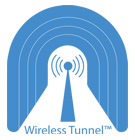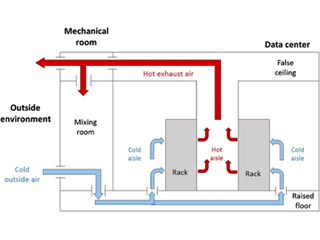What is Zigbee?
Introduction to Zigbee

what is Zigbee? It is a wireless mesh network designed for wireless control and monitoring applications. It is a low power wireless technology, ideal for battery-operated sensors. Defined in the 2004 Zigbee specification, later superseded by the ZigBee 2006 specification. In 2007 the Zigbee published the Pro Specification. These specifications are available on the Zigbee Alliance website.

Compared to technologies like Bluetooth and Wifi, Zigbee is a lower-cost solution. It has a lower data rate than these solutions. Classified as a Low-Rate Wireless Personal Area Network (WPAN). Typically used for home automation, security systems and medical devices. It has also found a place in Industrial applications. Automation and manufacturing processes have implemented Zigbee.
What is Zigbee System Architecture
Zigbee is a self-healing wireless mesh radio network. A mesh network allows for communication over a long distance through a series of hops. Every device in a Zigbee network can talk to each other. The devices become repeaters, relaying messages to the next device. If removed, Messages are routed to the next available device within range. The more devices you have in your network the reliability and range of the network improves.
Zigbee Mesh Network
 The diagram shows a typical mesh network. The red node is the gateway device, known as a Zigbee Coordinator. Every Zigbee network must contain at least one Zigbee Coordinator. Its job is to receive and store the collected sensor information.
The diagram shows a typical mesh network. The red node is the gateway device, known as a Zigbee Coordinator. Every Zigbee network must contain at least one Zigbee Coordinator. Its job is to receive and store the collected sensor information.
The dark blue nodes signify Zigbee routers. They can receive and route data coming from and going to end devices and the Zigbee Coordinator. The router buffers messages, forwarding them when the device next makes a connection. The Zigbee specification allows up to 14 end devices to connect with a router.
Light blue nodes are Zigbee end devices. These are sensors for example. Designed for low power, battery-operated and turned off most of the time. Devices periodically wake up to check for messages from the Zigbee Router. Data collected on the device since the last broadcast period is then sent.
Solid lines on the diagram denote the pathway of hops that the data is taking. Dashed lines symbolize the alternative path data can take if a device or gateway is removed. This is the self-healing feature of the mesh network. A Zigbee end device is not capable of establishing its pathway through the network. This must be assigned at the Zigbee coordinator or router. Known as route discovery and defined based on the number of devices or hops that must be made.
 This diagram illustrates two potential routings of the network. the number of hops made determines total length (L). The shortest route is always favoured. The diagram below illustrates two potential paths that the network could take. L1=3 and L2=4. In this configuration, the traffic will take the L1 route. In L2 the traffic goes through another router and Zigbee device to reach its destination.
This diagram illustrates two potential routings of the network. the number of hops made determines total length (L). The shortest route is always favoured. The diagram below illustrates two potential paths that the network could take. L1=3 and L2=4. In this configuration, the traffic will take the L1 route. In L2 the traffic goes through another router and Zigbee device to reach its destination.
There are other factors to be considered when determining the best pathway to take. Besides the number of hops taken, the link quality is determined by a parameter known as link cost. Calculated by factoring the hops, signal strength and energy conservation. The lower the link cost, the better chance there is of message delivery being successful. The Zigbee Specification contains the equations used to calculate the link cost. Zigbee coordinators and routers perform these calculations and store a routing table. This allows them to make decisions on the routing of a message to a specific destination.
What is Zigbee Frequency
Another advantage of Zigbee is that it runs on unlicensed frequency bands. In the Americas and Australia 902 – 928 MHz and 868.868.6 MHz in Europe. For the rest of the world, it operates on the 2.4 – 2.4835 GHz range. Unlicensed bands mean no government regulatory approvals, allowing rapid deployment.
What is Zigbee Range
The communications range of Zigbee is usually 10-20 meters in an enclosed space. Depending on the number of walls and construction material used this could be more or less. Outdoors in line of sight, Zigbee is effective up to 1,500 meters range. Local rules on maximum broadcast power will also have an effect on the Zigbee range.
Zigbee Alternatives
Alternative radio technologies designed for short-range WPAN include Bluetooth, Wifi and Z-Wave. Semtech’s LoRa™ radio technology is a long-range low power wide area network (LPWAN). LoRa™ is more suited to low bandwidth, none-critical infrastructure monitoring. Wireless Tunnel™ technology from AKCP, has improved standard LoRa™. Suitable for critical infrastructure monitoring with immediate alerts and acknowledgement of delivered messages.

AKCP established in the USA in 1981. We have 30+ years experience in professional sensor solutions. AKCP created the market for networked environmental and power monitoring in the data center. AKCP has over 150 employees and 200,000 installations worldwide. We are the world’s oldest and largest manufacturer of networked wired and wireless sensors.
Our Wireless Tunnel™ Technology is a world first. Bringing a LoRa™ based monitoring system for critical infrastructure to market.
AKCP created and still defines remote monitoring. We set the standards for technical achievement. We remain at the head of our field through constant innovation.
AKCP have an outstanding level of support. All customers have access to the companies technical and development staff. We based our success on this winning combination of technical excellence and support.




